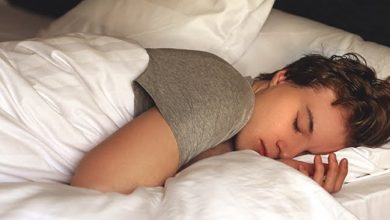Stress and headache in teenage girls : Here is the perfect solution

Art-based mindfulness activities could reduce headaches, a common side effect of stress in teenage girls.
The results of a latest study published in the journal ‘Art Therapy’. Teenage girls report higher levels of stress than adults and cite the school as the highest contributing factor. In response, recently some schools have turned to mindfulness-based programmes as a way to alleviate stress among their students.
The test group of eight teenage girls gave feedback on which activities they preferred. After three weeks of twice-weekly mindfulness and art therapy sessions, the girls reported experiencing significantly fewer headaches.
At the beginning of the study, the girls reported 7.38 headaches, on average, within the previous two-week period. At the end of the study, that number had dropped to 4.63 — almost a 40 per cent decrease. This drop remained even seven weeks after the study had ended.
“This study highlights one of my main research missions: We should be making interventions in cooperation with teenagers if we want these strategies to work,” said corresponding author Elin Bjorling.
“There’s something powerful about saying ‘I’m inviting you to start thinking about how you could get better. Come have a conversation with me about how we could do this.’ I think that’s why we saw such a strong response even in this tiny study,” added Bjorling.
The team recruited eight girls between the ages of 14 to 17 from a high school in Seattle. All of the participants reported experiencing three or more headaches not related to an injury within a two-week period, and five of the eight mentioned tension or stress as the main reason for headaches.
During the programme, the students met twice a week for a 50-minute session with the research team. Each session began with an activity in which students would map where they were feeling stressed on a drawing of a body. Then the teens would participate in mindfulness and art activities before closing the session with another body map.
Outcome of the research
“After the study, we looked at all the before and after body maps side by side. It was so clear that something significant was going on. In the beginning, everything was in pieces, and in the end, everything was flowing through the whole body,” Bjorling said.
The teens tried different mindfulness techniques in each session so they could find which ones worked the best for them. What teens liked: square breathing, a technique that encourages people to take slow breaths by concentrating and counting.
“I thought no teen ever wants to do count breathing, and they’re never going to do it. But a few of them said ‘That’s my favourite. I do it all the time now,” Bjorling said.
What teens didn’t like: mindful eating, a technique that asks people to focus on what and how they’re eating.
“They hated it. This was a technique straight out of a lot of mindfulness programmes for teens, but it didn’t connect with them. It just annoyed them. It goes to show I need them to be experts in their own lives,” Bjorling said.
The researchers also asked the students to participate in different mindful art activities. During each session, the students tried a new art medium — they particularly liked using oil pastels — and different types of art therapy projects, including one where they worked together to create mandalas before and after a meditation exercise.
While the teens experienced fewer headaches after the study ended, their overall stress levels didn’t change much. However, the students reported feeling better in the moment, saying that they felt like they could handle whatever happened for the rest of the day.






